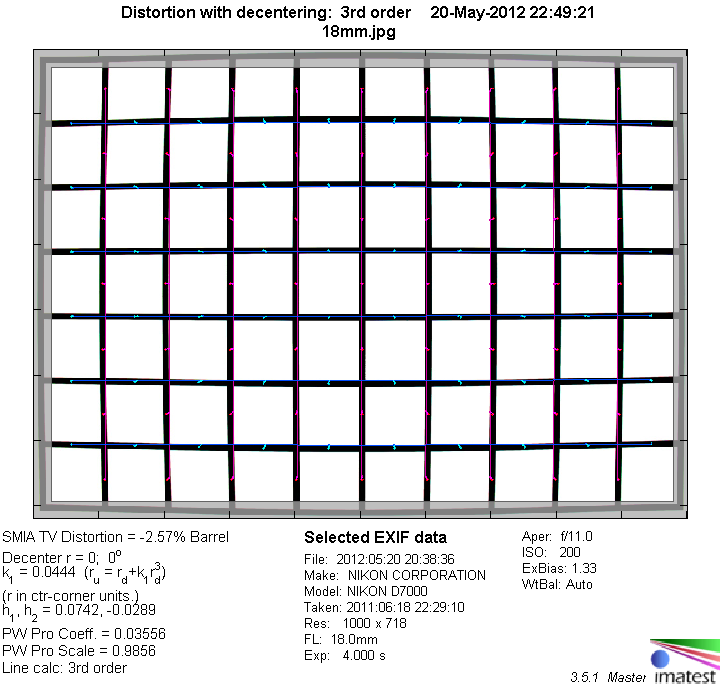|
Sigma AF 18-125mm f/3.8-5.6 DC HSM OS - Review / Test Report - Analysis |
|
Lens Reviews -
Nikon / Nikkor (APS-C)
|
|
Page 2 of 3

Distortion
The Sigma shows a distortion characteristic that is typical for many lenses with a large zoom range. There is quite pronounced barrel distortion at the shortest focal length, which soon switches over to pincushion type distortion when zooming in. The two forces even out at around 24mm, where the lens is basically free of distortion.
The amount of pincushion distortion reaches its maximum at around 50mm, from there on it is reduced with longer focal lengths, but still remains an issue for images with straight lines near the image borders.
|
Move the mouse cursor over the focal length text marks below to observe the respective distortion
|
| 18mm |
28mm |
50mm |
85mm |
125mm |
|

|
The chart above has a real-world size of about 120x80cm.
The image below gives an impression of the impact of pincushion distortion on real-world subjects.

Vignetting
The Sigma shows the quite typical characteristic of a dedicated APS-C lens with a strong degree of vignetting at wide-open aperture at the extreme ends of the zoom range. However, stopping down to apertures smaller than f/5.6 helps to reduce the problem to unobjectionable levels.

MTF (resolution)
The lens shows very good to excellent resolution in the image center, with the best performance at the shortest end of the zoom range, that slowly decreases towards longer focal lengths.
The borders and corners show a similar performance curve, albeit on a somewhat lower level. At the lower half of the zoom range they manage to achieve very good resolution, except for the extreme borders at 18mm. From 50mm onwards, the resolution drops considerably.
Please note that the MTF results are not directly comparable across the different systems!
Below is a simplified summary of the formal findings. The chart shows line widths per picture height (LW/PH) which can be taken as a measure for sharpness.
If you want to know more about the MTF50 figures you may check out the corresponding Imatest Explanations

Chromatic Aberrations (CAs)
CAs (color shadows at harsh contrast transitions) are well controlled at medium focal lengths, but more pronounced towards both ends of the zoom range where they reach values of more than 2 pixels.
However, CAs can easily be corrected in software or by the camera itself (most modern Nikon DSLRs remove CAs themselves if you shoot JPGs).

|